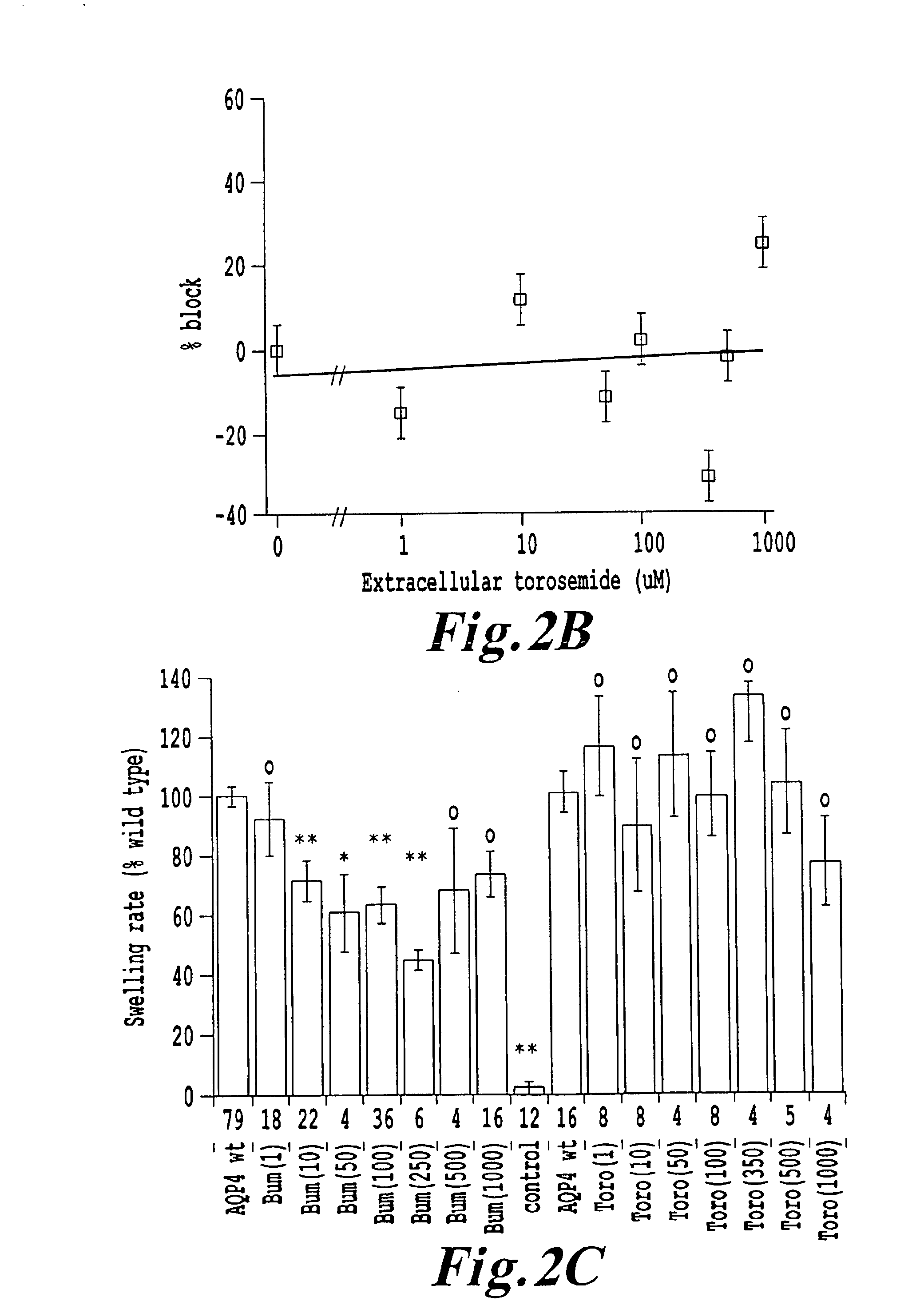Aquaporin modulators and methods of using them for the treatment of edema and fluid imbalance
a technology of edema and fluid imbalance, applied in the direction of antinoxious agents, drug compositions, extracellular fluid disorders, etc., can solve the problems of inability to identify molecular targets for intervention, limited value of available treatment for patients with massive edema, and lack of reliable information about the structure of compounds
- Summary
- Abstract
- Description
- Claims
- Application Information
AI Technical Summary
Benefits of technology
Problems solved by technology
Method used
Image
Examples
example 1
[0109]Selection rationale and methodology. The ability of compounds, analogs and / or agents to block an aquaporin channel was quantified by videomicroscopic analyses of cross-sectional area of AQP-expressing oocytes as a function of time in a defined osmotic gradient, allowing the calculation of the water permeability factor (Pf), statistical evaluation of significant differences in the rate of water entry, and definition of dose response curves with IC50 values (concentration required for half-maximal block).
[0110]This compound evaluation method has been utilized with AQP1,-4,-5, and -9 channels. Observations of channel stimulation were made using the same assay method, however, the results were reported as % stimulation over control at a given concentration. Previous studies by Yool and colleagues (Brooks et al., 2000; Yool et al., 2002) identified tetraethylammonium (TEA) as the first nonmercurial agent that blocks water flux through AQP1 channels (Brooks, et al., 2000). TEA is kn...
example 2
In Vivo Effects of AQP4 Block
[0118]The role of native AQP4 as a target of block by bumetanide was tested in primary cultures of astroglia (FIG. 4). We compared the swelling responses of rat astroglial cells in primary hippocampal cultures after 15 min preincubation with or without drug. Swelling was induced by rapid perfusion of the culture plate with 50% hypotonic saline, either with or without extracellular bumetanide (100 μM) to match the preincubation condition. Glial cells were identified by morphological comparison with cells positive for a glial-specific marker (GFAP). Time-lapse images were taken at 15 second intervals before and during hypotonic challenge. The response was determined by the change in soma area as a function of time, as visualized by time-lapse digital imaging (Olympus MagnaFire™ camera and image acquisition software) using an inverted phase contrast microscope (Nikon); data were analyzed by Scion Image (NIH) software. Each culture was used for only one swel...
PUM
| Property | Measurement | Unit |
|---|---|---|
| temperature | aaaaa | aaaaa |
| water permeability | aaaaa | aaaaa |
| body weight | aaaaa | aaaaa |
Abstract
Description
Claims
Application Information
 Login to View More
Login to View More - R&D
- Intellectual Property
- Life Sciences
- Materials
- Tech Scout
- Unparalleled Data Quality
- Higher Quality Content
- 60% Fewer Hallucinations
Browse by: Latest US Patents, China's latest patents, Technical Efficacy Thesaurus, Application Domain, Technology Topic, Popular Technical Reports.
© 2025 PatSnap. All rights reserved.Legal|Privacy policy|Modern Slavery Act Transparency Statement|Sitemap|About US| Contact US: help@patsnap.com



